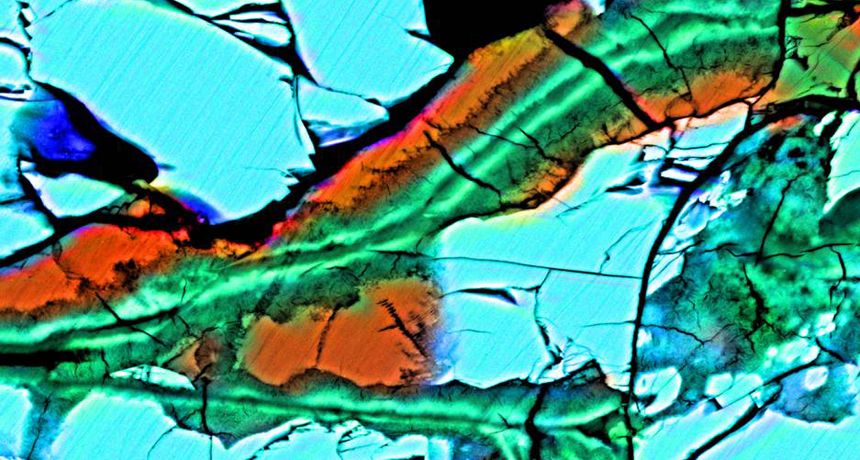Carbonation may have grounded Mars’ atmosphere
Process could have forced Red Planet’s atmospheric carbon dioxide into the dirt

Veins of clay (green) surround both the carbonate (orange) and olivine (blue) in this false-color microscopy image of a sliver of the Lafayette meteorite.
SUERC/Univ. of Glasgow







